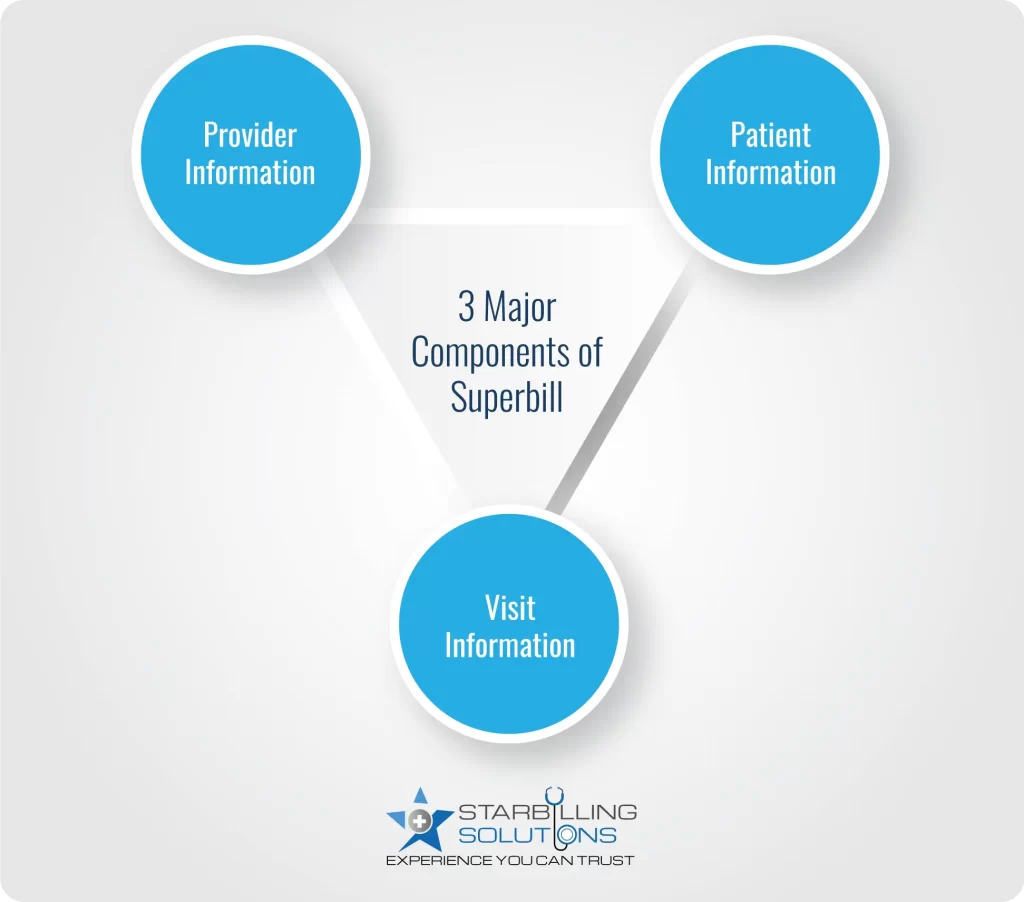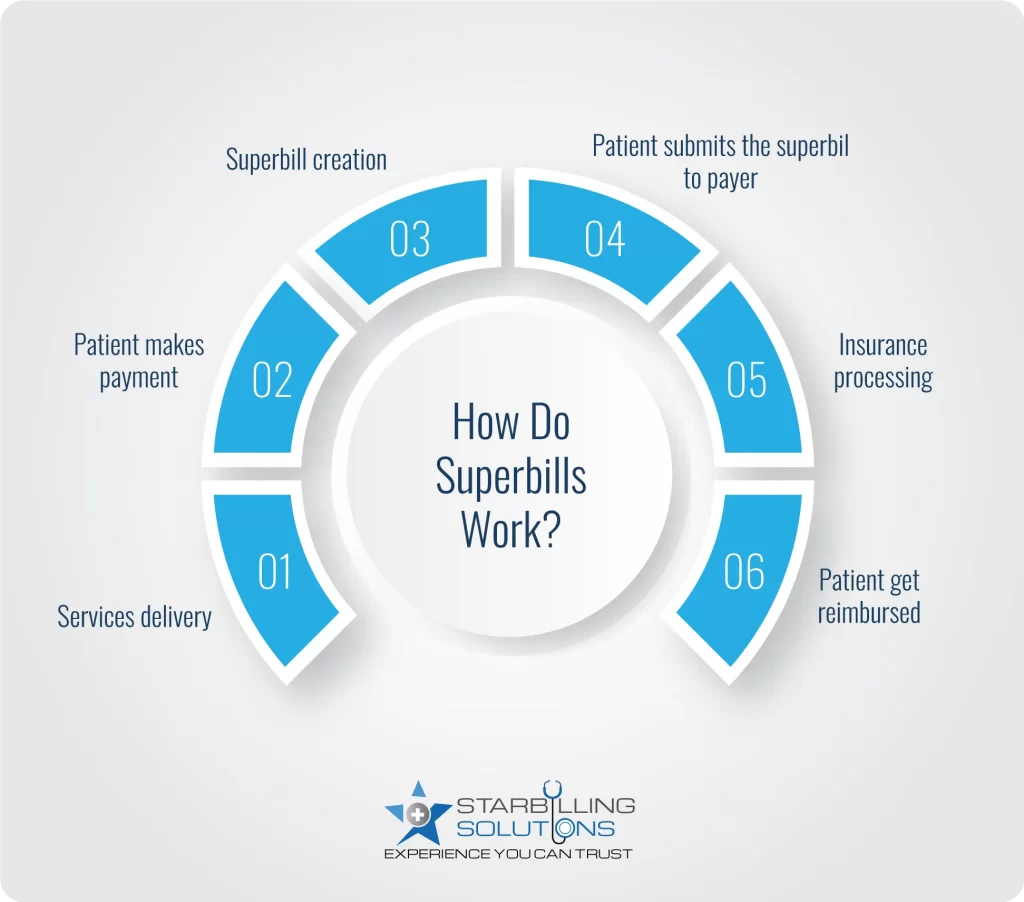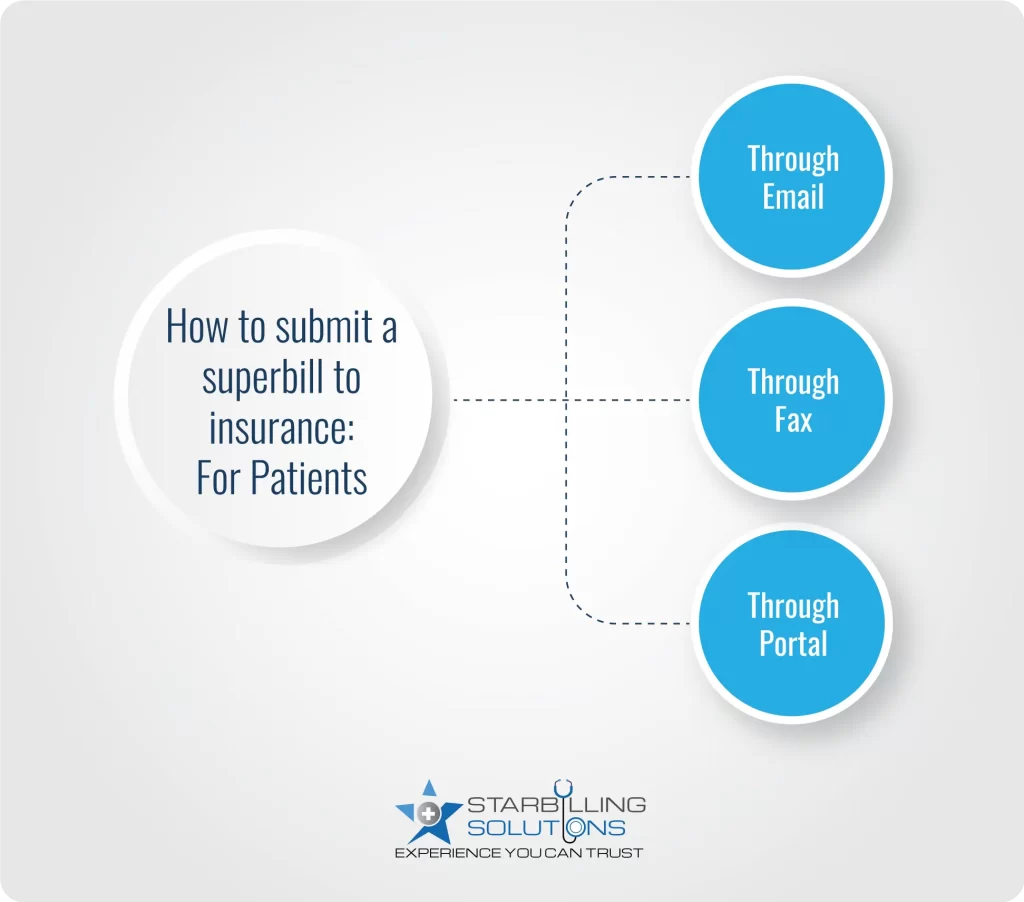
A super bill is a crucial tool in medical billing that patients use for reimbursement. As a patient, whenever you see an out-of-network provider like a therapist, dietitian, or chiropractor, most likely you get a superbill. Knowing what is superbill in medical billing is quite confusing for both patients and practitioners, so we have gathered all related information in this article. This tells patients and practices what a superbill is, how to create it and submit it, why it is necessary, and how it works. So, come along with us and explore superbill insurance in detail.
A medical superbill, also known as an encounter form, charge slip, or fee ticket, is a detailed invoice a doctor gives to a patient. This pre-printed form records the practices, patients’ details, and fees associated with medical treatment. Using the super bill, the patient appeals to the payer for reimbursement.
Practices offering therapy, podiatric, and optometric solutions usually deal with superills as they often treat patients as an out-of-network provider. An out-of-network provider means the healthcare is not registered with any insurance company, so patients have to submit claims on their own using the superbill for reimbursement.
A super bill is ideal for healthcare providers when they are out of network with the patient’s insurance company or not yet approved by a payer. More detailed situations when healthcare providers consider superbill for reimbursement are the following:
A medical superbill for insurance consists of three components pre-defined by insurance carriers. Each component has specific requirements, as described below.

This is the first section of the insurance super bill, which includes all the necessary information related to healthcare providers.
This section has all the information regarding patients, including their names, addresses, insurance information, etc.
A super bill for insurance cannot be successful unless this section is handled accurately because if it isn’t, patient claims can be denied, and you could lose your client forever. Necessary information to include in this section is:
A standard superbill consists of practice, patient, and visit information. However, there is no standard format, style, or template for the super bill. But based on the mandatory information to include, here is a superbill example for a generic preview.

The super billing process works for an out-of-network provider where practices offer services to patients, get paid directly, and in return, patients get an invoice called superbill, which they submit to the payer to get reimbursed. To get a detailed breakdown of how does a superbill work, follow these listed steps.

That’s how the patient gets some amount as a superbill reimbursement. However, if the patient thinks the provider doesn’t reimburse all costs, they have the option to revise and resubmit the superbill.
To learn how to create a superbill manually, gather key patient and practice information on a superbill template. The template also includes the visit detail, which includes diagnosis codes, procedure codes, and billing information. Here’s a more detailed step-by-step process for creating a superbill for therapy, optometry, chiropractic, dermatology, and other practices.
You will add all your professional information at the top of the medical superbill. This means your name, email, NPI number, phone number, credentials (like LCSW, LPC, MD, etc.), clinic address, and tax ID. Insurance companies require this information to determine who provided the treatment.
Draw a divided line to separate the patient information section; now, add the patient’s details. It includes their full name, date of birth, insurance ID number, and contact information. In this way, the insurer can match the insurance super bill with the right member on their plan.
Add details that show what happens during the treatment. Write down the service date, session length, and what kind of service it was. Now, you need to use accurate medical coding to enter POS CPT codes to accurately describe the treatment location and the procedure performed, and ICD-10 codes that explain the diagnosis or reason for treatment. Insurance providers need these codes to know what they are reimbursing for.
In this step of super billing, clearly state how much you charged for the session and how much the patient paid out of his own pocket. This helps the insurance companies calculate the amount to reimburse. Make sure these payment figures match the visit details.
Finally, add your signature on the form and mention the treatment date to conclude the superbill. Without it, the payer may not accept the form, and the superbill reimbursement could be delayed.

Emailing is a fast and easy way to submitting a superbill to insurance. To do this, just attach the file and send it to the insurance company’s official email. This technique saves time, keeps a digital record of your superbill, and makes follow-up and replying easy. As a result, insurers quickly respond to your superbill, and you get instant reimbursement.
Faxing means printing the medicare superbill and sending it to the insurance company’s fax number using a fax machine. It is not widely used, but it is still used in some clinics where the internet connection is not too strong. This method is unreliable and relatively slow, so you can’t always get clear confirmation and quick reimbursement.
Submitting through the insurance company’s official website is the best option. Just log in to their portal, upload the superbill, and you are done. This way is more secure, trackable, and processes faster than email and fax.
Knowing what is superbill in medical billing seems simple, but a little error in coding or a missing detail could lead to delays or a denied reimbursement. For busy healthcare providers, these technical issues could push them away from patient care. That’s where our medical billing experts team steps in, which specializes in creating insurance-compliant superbills. From billing codes to patients and providers’ credentialing, every detail is added accurately. So, from now on, you can prioritize quality patient care while our billing experts handle the paperwork.
Check for your insurance provider's guidelines for their specific time frame for submitting super billing. However, most insurance companies that offer out-of-network coverage generally have time constraints ranging from 90 to 365 days.
Yes, companies could deny your super bill insurance, but why?You can find the reason in your explanation of benefits (EOB). However, some of the common reasons include:
Here are the most common out-of-network healthcare providers that are responsible for creating a medical superbill.
No, an HCFA 1500 (Now CMA 1500) and an insurance super bill are not the same, as they both serve different purposes. The HCFA 1500, on the one hand, is a standardized claim form that a healthcare provider submits to the insurance provider for billing purposes. On the other hand, a superbill, which is an itemized receipt, is given to patients to help them file claims with their insurance. The superbill insurance form is not standardized and may vary for each practice.
Typically, the patient submits the medical superbill to the insurance provider. However, the doctor could also submit it willingly on behalf of the patient, but that’s optional.
Your insurance company will reimburse you based on your insurance plan. Factors like coverage, deductible, coinsurance, and the "allowed amount" could affect the reimbursed amount. For example, if you pay 200$ for a therapy session and your insurance allows $140 with 25% coinsurance, then you will be reimbursed $105.
Doctors typically use healthcare software such as therapy notes, Practice Fusion, and IntakeQ to generate a superbill. However, these tools are paid and could be expensive, so practices can alternatively use a pre-designed template or create a manual re-printed form.